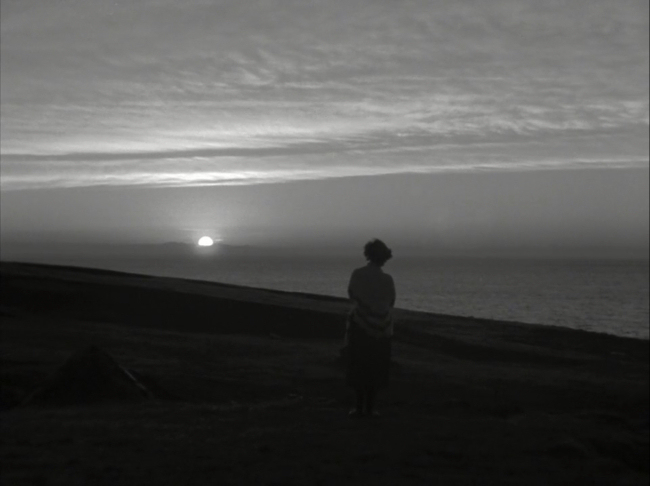
Logically, a safer and more efficient way of life is preferable to a dangerous and difficult one. Yet few viewers would be unaffected by the evacuation of the remote, forbidding island in Michael Powell's 1937 film The Edge of the World. Based loosely on the evacuation of St. Kilda in the Scottish archipelago a few years earlier, Powell's film has a plot dealing with the deterioration of a small culture that had existed for centuries but primarily the great filmmaker makes his point with an incredible series of breathtaking compositions. Shot on the island of Foula, the images are spellbinding.

The film begins with an unnamed English yachtsman (Powell himself) piloting his craft along with a companion and a guide (Niall MacGinnis) past the imposing and strange cliff sides that will dominate the film. They go ashore to find deserted buildings and in a beautifully eerie sequence the guide stands by while ghostly images of the former villagers walk past and look at him in double exposed footage. I love that the ghosts seem able to see the guide but he can't seem to see them.
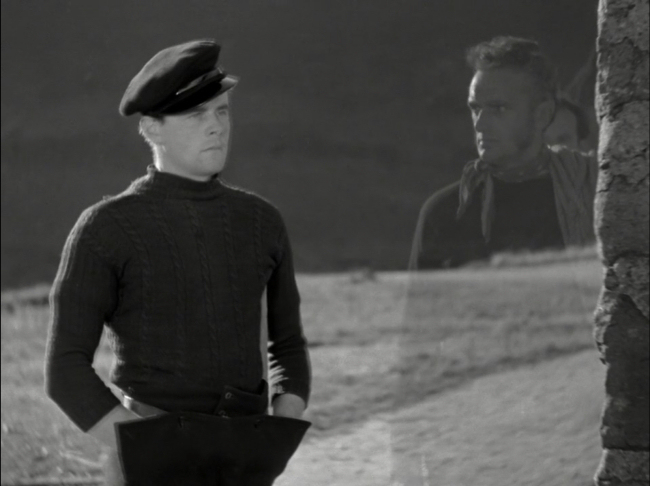
We meet these ghosts in flashback and witness a drama about a young woman named Ruth (Belle Chrystall), her father, Peter (John Laurie), her brother, Robbie (Eric Berry), and her boyfriend, Andrew, who turns out to be the guide we met at the beginning. Robbie wants to leave the island where eking out a living has become harder now that trawlers regularly come by and take vast quantities of the fish the inhabitants once depended on. Andrew would prefer to stay, marry Ruth, and maintain his ancestors' way of life.

There's very little dialogue as the story unfolds with shots of people climbing up treacherous, vertical rock face or perched precariously on the edges of the cliffs looking quite at ease. When Robbie and Andrew compete in climbing a difficult cliff side, the women watch from this presumably safer vantage point.
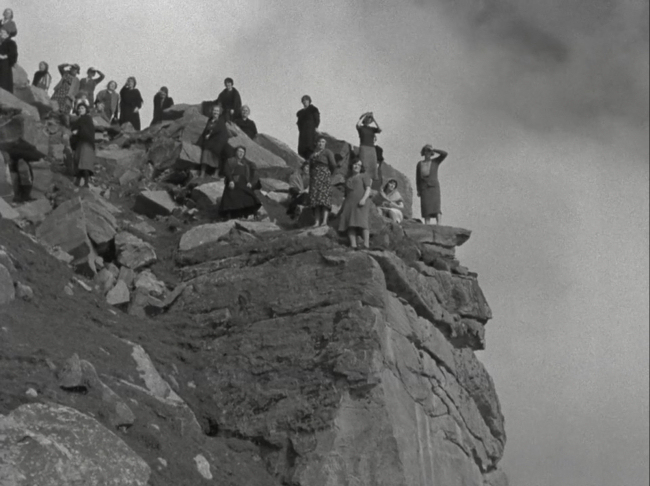
Even more impressive are the shots from above where distant, sparkling sea is visible beyond the shaded figures of three of the women.
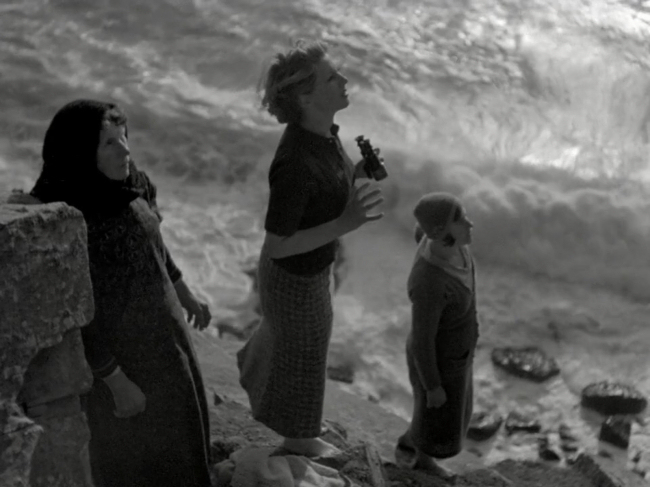
Tiny figures are also frequently juxtaposed with expanses of rocky, sparsely vegetated landscape.
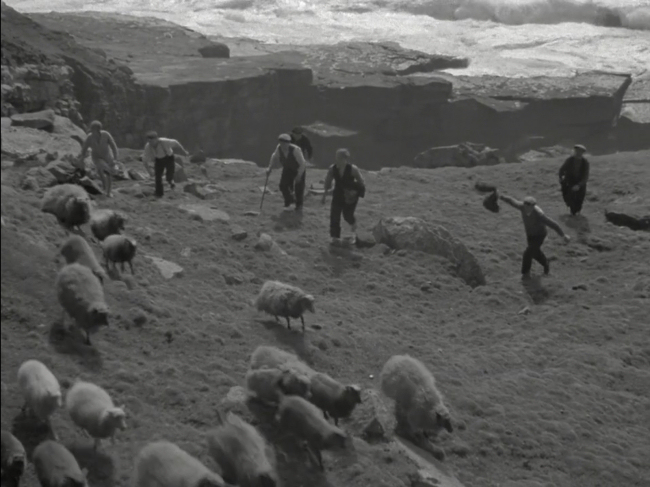
How and why would anyone live here? The answer is in the impact of the visuals which is deeper than beauty for the seduction of their gloom and maybe inexpressible in words.

No comments:
Post a Comment